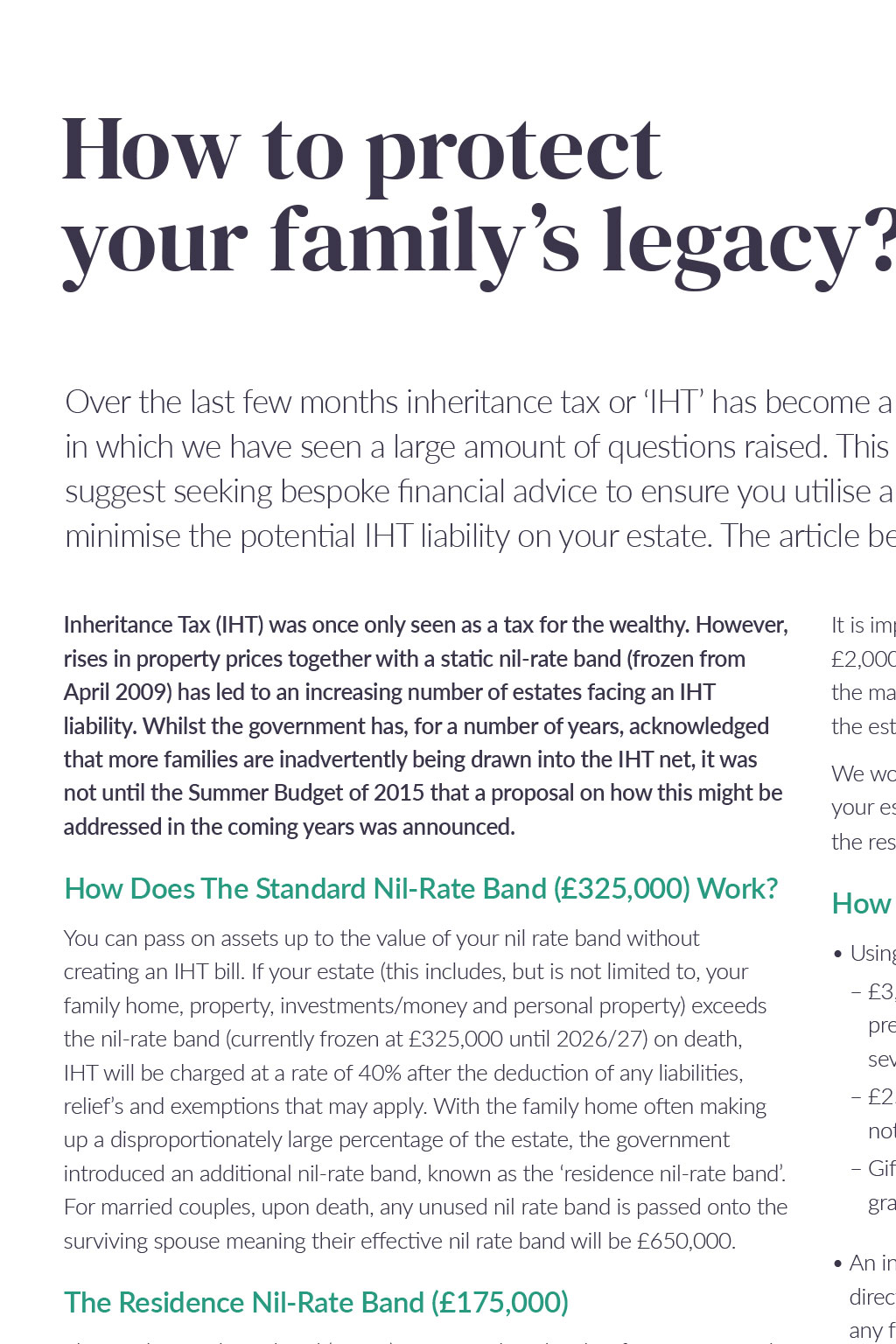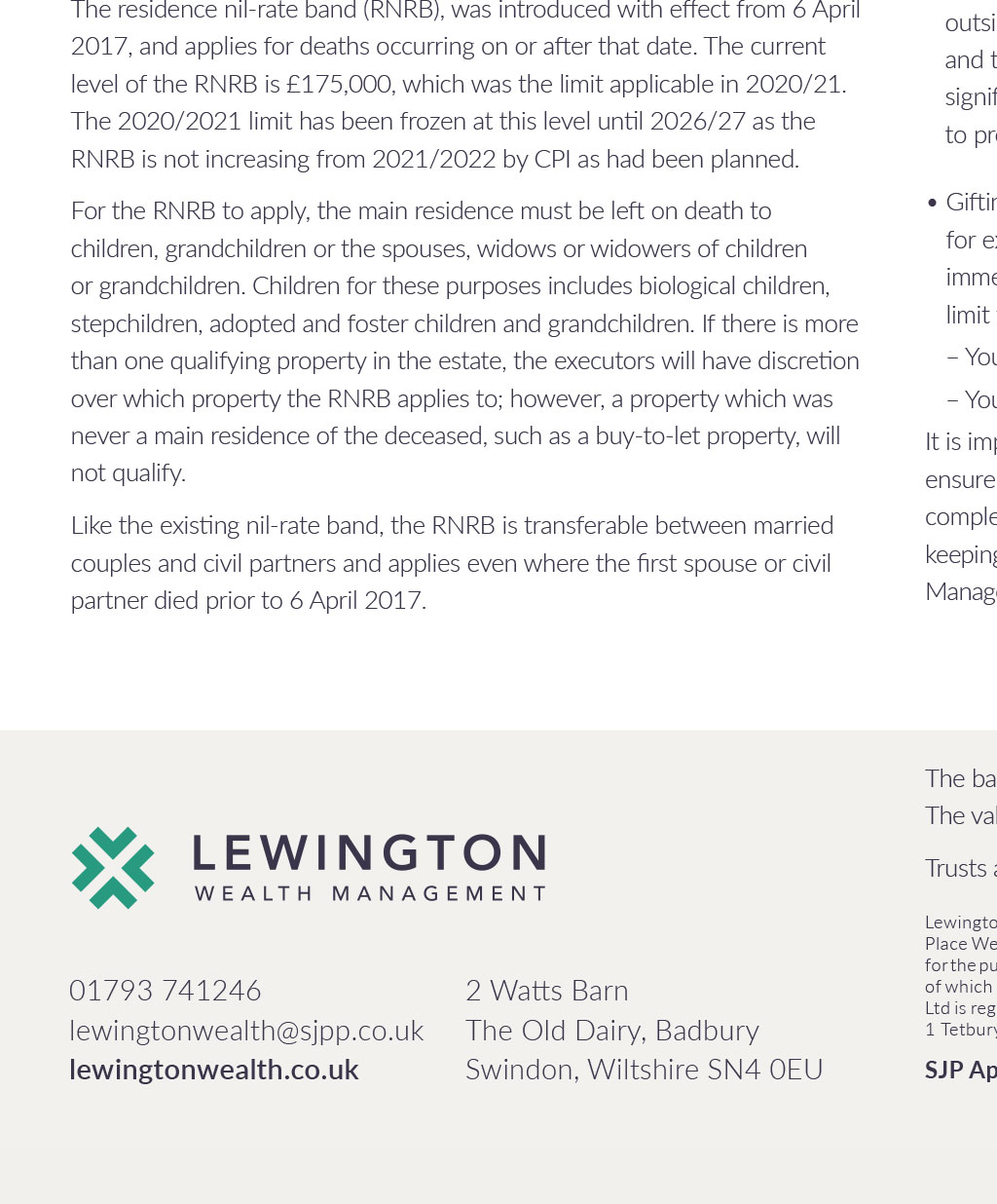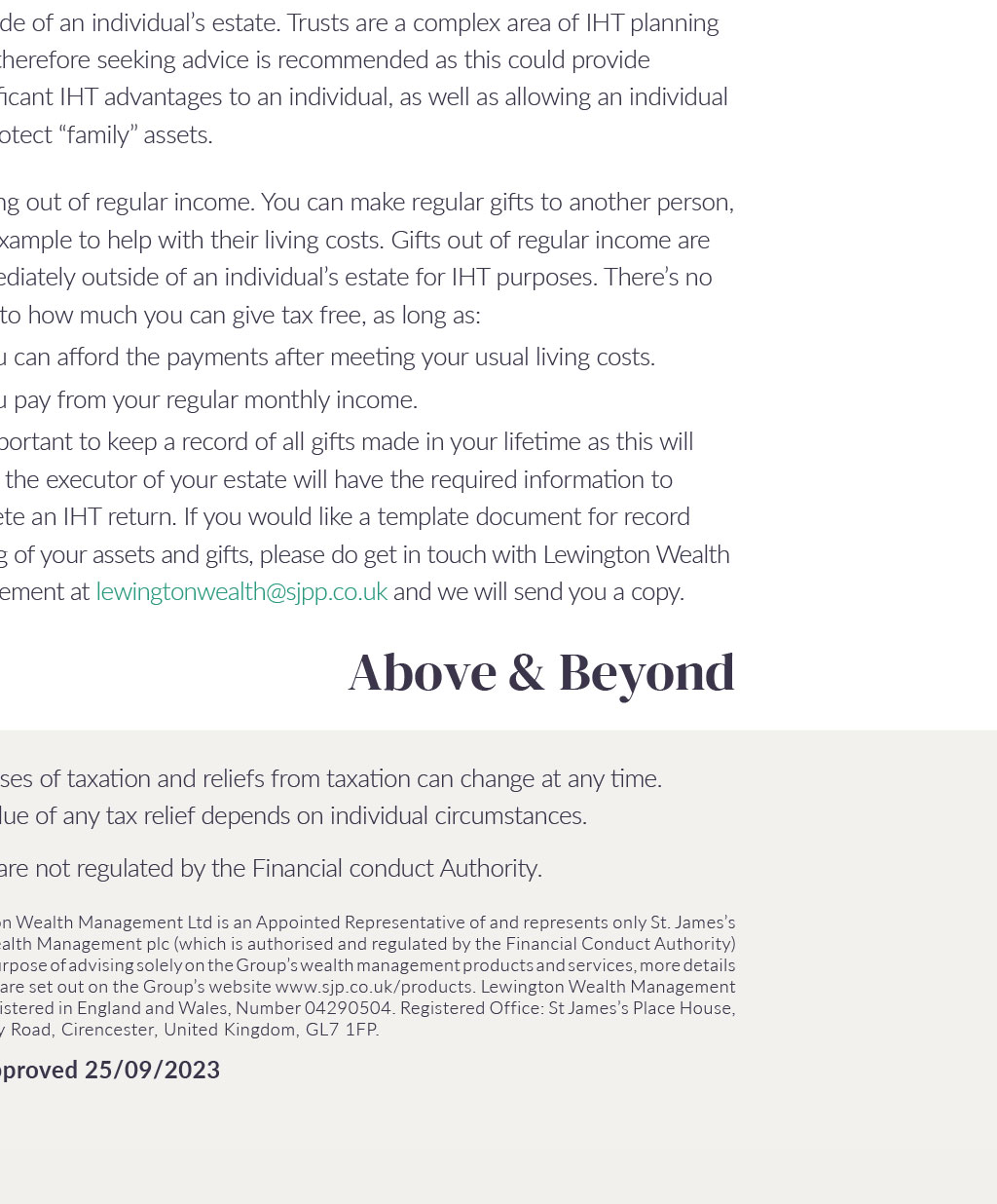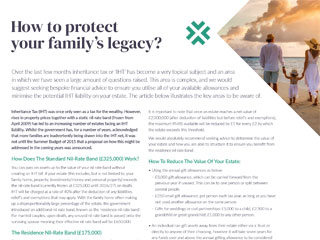








How to protect your familys legacy? Over the last few months inheritance tax or IHT has become a very topical subject and an area in which we have seen a large amount of questions raised. This area is complex, and we would suggest seeking bespoke financial advice to ensure you utilise all of your available allowances and minimise the potential IHT liability on your estate. The article below illustrates the key areas to be aware of. Inheritance Tax (IHT) was once only seen as a tax for the wealthy. However, rises in property prices together with a static nil-rate band (frozen from April 2009) has led to an increasing number of estates facing an IHT liability. Whilst the government has, for a number of years, acknowledged that more families are inadvertently being drawn into the IHT net, it was not until the Summer Budget of 2015 that a proposal on how this might be addressed in the coming years was announced. How Does The Standard Nil-Rate Band (325,000) Work? You can pass on assets up to the value of your nil rate band without creating an IHT bill. If your estate (this includes, but is not limited to, your family home, property, investments/money and personal property) exceeds the nil-rate band (currently frozen at 325,000 until 2026/27) on death, IHT will be charged at a rate of 40% after the deduction of any liabilities, reliefs and exemptions that may apply. With the family home often making up a disproportionately large percentage of the estate, the government introduced an additional nil-rate band, known as the residence nil-rate band. For married couples, upon death, any unused nil rate band is passed onto the surviving spouse meaning their effective nil rate band will be 650,000. The Residence Nil-Rate Band (175,000) The residence nil-rate band (RNRB), was introduced with effect from 6 April 2017, and applies for deaths occurring on or after that date. The current level of the RNRB is 175,000, which was the limit applicable in 2020/21. The 2020/2021 limit has been frozen at this level until 2026/27 as the RNRB is not increasing from 2021/2022 by CPI as had been planned. For the RNRB to apply, the main residence must be left on death to children, grandchildren or the spouses, widows or widowers of children or grandchildren. Children for these purposes includes biological children, stepchildren, adopted and foster children and grandchildren. If there is more than one qualifying property in the estate, the executors will have discretion over which property the RNRB applies to; however, a property which was never a main residence of the deceased, such as a buy-to-let property, will not qualify. Like the existing nil-rate band, the RNRB is transferable between married couples and civil partners and applies even where the first spouse or civil partner died prior to 6 April 2017. It is important to note that once an estate reaches a net value of 2,000,000 (after deduction of liabilities but before reliefs and exemptions), the maximum RNRB available will be reduced by 1 for every 2 by which the estate exceeds this threshold. We would absolutely recommend seeking advice to determine the value of your estate and how you are able to structure it to ensure you benefit from the residence nil rate band. How To Reduce The Value Of Your Estate: Using the annual gift allowances as below: 3,000 gift allowance, which can be carried forward from the previous year if unused. This can be to one person or split between several people. 250 small gift allowance, per person each tax year, as long as you have not used another allowance on the same person. Gifts for weddings or civil partnerships: 5,000 to a child, 2,500 to a grandchild or great-grandchild, 1,000 to any other person. An individual can gift assets away from their estate either via a Trust or directly to anyone of their choosing, however it will take seven years for any funds over and above the annual gifting allowance to be considered outside of an individuals estate. Trusts are a complex area of IHT planning and therefore seeking advice is recommended as this could provide significant IHT advantages to an individual, as well as allowing an individual to protect family assets. Gifting out of regular income. You can make regular gifts to another person, for example to help with their living costs. Gifts out of regular income are immediately outside of an individuals estate for IHT purposes. Theres no limit to how much you can give tax free, as long as: You can afford the payments after meeting your usual living costs. You pay from your regular monthly income. It is important to keep a record of all gifts made in your lifetime as this will ensure the executor of your estate will have the required information to complete an IHT return. If you would like a template document for record keeping of your assets and gifts, please do get in touch with Lewington Wealth Management at lewingtonwealth@sjpp.co.uk and we will send you a copy. Above & Beyond The bases of taxation and reliefs from taxation can change at any time. The value of any tax relief depends on individual circumstances. Trusts are not regulated by the Financial conduct Authority. 01793 741246 lewingtonwealth@sjpp.co.uk lewingtonwealth.co.uk 2 Watts Barn The Old Dairy, Badbury Swindon, Wiltshire SN4 0EU Lewington Wealth Management Ltd is an Appointed Representative of and represents only St. Jamess Place Wealth Management plc (which is authorised and regulated by the Financial Conduct Authority) for the purpose of advising solely on the Groups wealth management products and services, more details of which are set out on the Groups website www.sjp.co.uk/products. Lewington Wealth Management Ltd is registered in England and Wales, Number 04290504. Registered Office: St Jamess Place House, 1 Tetbury Road, Cirencester, United Kingdom, GL7 1FP. SJP Approved 25/09/2023